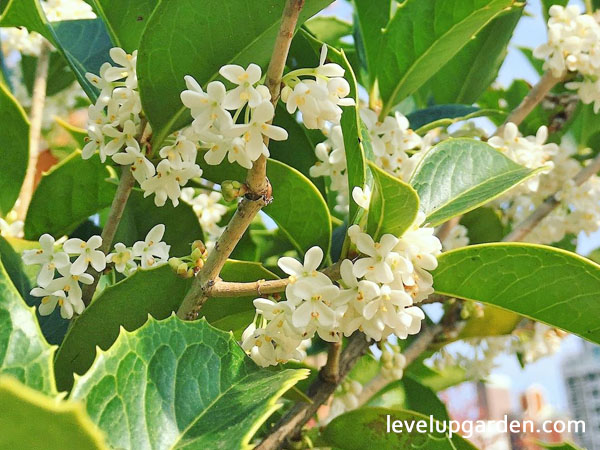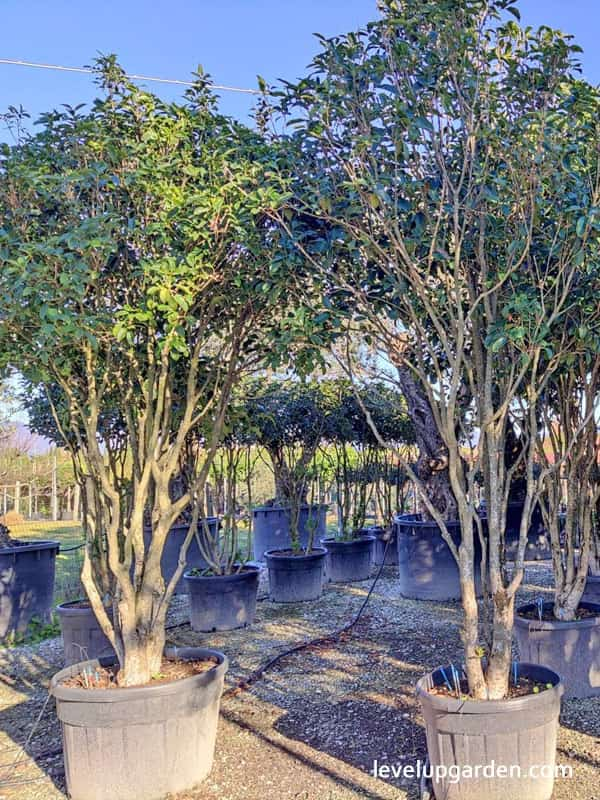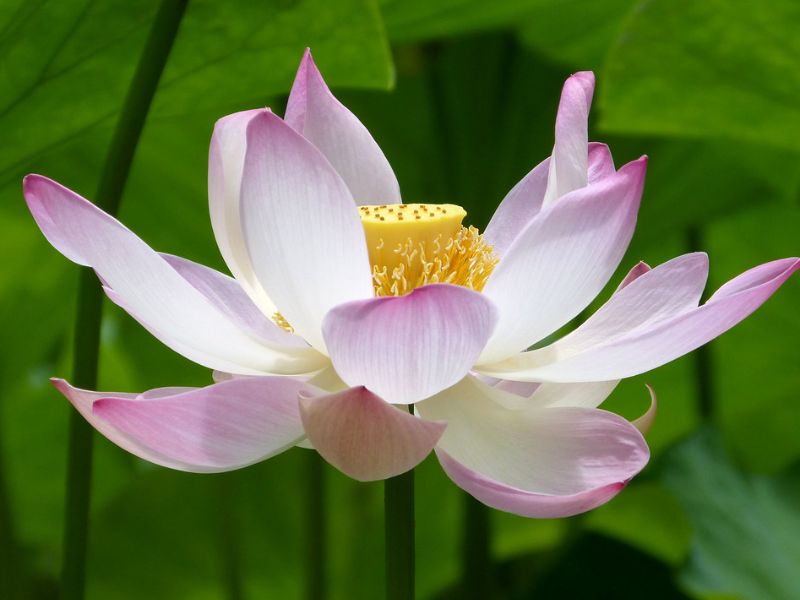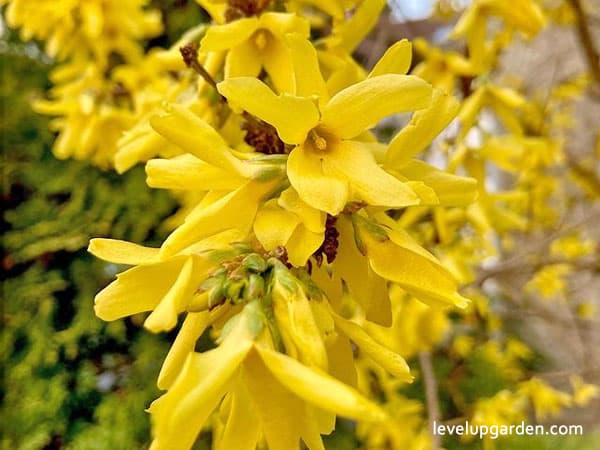The Fragrant Tea Olive tree (Osmanthus fragrans), also called the Sweet Osmanthus or Sweet Olive, is known for its fragrant white flowers. An evergreen broadleaf evergreen shrub of the Moraceae family native to Asia, it is a dense shrub that grows densely. It produces fragrant flowers in spring and sporadic blooms in fall.

Sweet Olive can be planted as a large specimen in open spaces and lawns, used as a screen or hedge plant, or placed behind a perennial border. Place near paths, patios, and entrances for a pleasant fragrance around your home. Fragrant Tea Olive tree really makes a good decoration for your home.
Tea olive is an evergreen shrub or small tree cultivated for the amazingly beautiful fragrance of its flowers. The white flowers are clustered on stems and bloom in the fall and sometimes in the spring; planting just one tree will fill your garden with the fragrance of peach, apricot, gardenia, or jasmine. It requires little care or trimming and gives a dense canopy a rounded or vase-like shape. It can be grown throughout the country, even in the warmer areas of Zone 7.
Like other tea olives, tea olives are generally planted as seedlings in the fall and can root slowly in the cooler winter months. The growth rate is fairly slow, growing 4 to 12 inches per year (or more in warmer coastal regions). Once planted, it is a very long-lived plant.
I. Plant Profile – An Overview of the Fragrant Tea Olive Tree
| Common name | Fragrant Tea Olive, Sweet Osmanthus, Tea Olive |
| Botanical name | Osmanthus fragrans |
| Genus | Osmanthus |
| Species | fragrans |
| Family | Oleaceae |
| Plant Type | Shrubs, Trees |
| Plant Family | Osmanthus |
| Exposure | Full Sun, Partial Sun |
| Hardiness Zones | 7 – 11 (USDA) |
| Height | 10′ – 15′ |
| Spread | 6′ – 8′ |
| Water Needs | Average |
| Maintenance | Average |
| Soil Type | Clay, Loam, Sand |
| Soil pH | Acid, Alkaline, Neutral |
| Soil Drainage | Moist but Well-Drained, Well-Drained |
Varieties:
- ‘Apricot Gold’
- ‘Aurantiacus’
- ‘Butter Yellow’
- ‘Conger yellow’
- ‘Fudingzhu’
- ‘Hangzhouhuang’
- ‘Thunbergii’
II. Fragrant Tea Olive Tree Appearance
An evergreen shrub, tea olive tree can reach a height of 20 to 30 feet under ideal conditions. But it is usually much smaller, about 10 to 15 feet tall and 6 to 8 feet wide. Older trees can be as wide as they are tall, with some trunks and leaves shaped like a low, restrained urn.

The leaves are 3 to 5 inches long with small teeth on the edges, a little like holly. The leaves are distinguishable because they are not arranged in alternate rows like holly, but rather in pairs on the stem. The flowers are small and white in color that appear in spring, followed by several flowers in the leaf axils in the fall.
III. Fragrant Tea Olive Tree Growing and Care Conditions
Fragrant tea olive and other plants of the genus Osmanthus genus fit well into the landscape of the southern United States and can be grown as large potted houseplants in colder regions. They are resistant to most pests and do not mind strong pruning. The plant prefers ample space, and some varieties can grow up to 30 feet tall in the right conditions.

For best results, plant in full sun to semi-shade in moist, well-drained soil. In southern climates, it prefers afternoon shade. Tea Olive tree grows well in heavy clay soils and is a drought tolerant plant, but needs to be watered during hot, dry periods.
Tea olive trees respond well to pruning and can be pruned to a tree or espalier. In cooler areas, it can be overwintered in containers or grown as a houseplant.
Planting
Before planting tea olives in the ground, moisten the roots and place in the shade for several days. When ready to plant, place in full sun or partial shade, avoiding deep shade (4 to 6 hours of sun per day). It can be planted in clay, loamy or sandy soil, but choose a well-drained, slightly acidic soil.
Dig a hole twice as deep and twice as wide as the size of the rootball. Set the tree in the hole so that the roots spread over the surface of the hole. Fill the hole with a mixture of the original soil and the required topsoil. Tamp down firmly to remove voids. Water just enough to moist the top 3 inches of soil, but not soaking wet.
Light
Fragrant Tea Olive can tolerate a wide range of both sun and shade. It grows most densely in full sun, but will happily thrive in light or medium shade. It will also grow in any soil, from clay to sand, as long as it is well drained. It likes a steady supply of moisture, but is not very tolerant of drought once planted. It is not susceptible to pests or diseases, making it a self-sufficient plant that requires little care.
Watering
Water regularly for the first year after planting. After the first year it quickly becomes drought tolerant and only needs watering during prolonged dry seasons. It is a low maintenance plant which makes it more ideal.
Fertilizer
Tea olives benefit from a slow-release fertilizer containing sulfur and iron once in the spring. Never apply fertilizer just before the onset of winter cold. The exception to this rule is when potted plants are moved indoors for the winter, and a light application when they are moved indoors is effective.
Soil Conditions
Tea olives grow easily in any good soil, but average, moist, well-drained soil will give you the best outcome. Tea olives prefer acidic to neutral soils with a pH of 5.0 to 7.5.
Temperature
Fragrant Tea Olives can tolerate temperatures as low as -40°F (-40°C), but they can tolerate temperatures as high as -40°F (-40°C) if you are in an area where temperatures drop gradually and the plant is able to adapt. If you live in a warmer Zone 8 or Zone 7, you will have success in a normal winter with this plant. In colder areas, flowering may be divided into winter, bloom briefly in the fall, then stop, and resume on warmer days in early spring. Thus, from October to March, flowering is almost continuous, allowing the plant to spend half the year in bloom.
Pruning
Tea olive is a plant that responds well to pruning. Pruning should be done in spring or early summer. First, disinfect the pruning shears. Next, remove dead, diseased, or dying areas. Remove flowers that have finished blooming to encourage the growth of new flowers.
Pests and Diseases
Although there are few complaints common to Fragrant Tea Olive , this plant is susceptible to cold, and an unexpected cold snap can damage the following year’s flower buds and stop the plant’s growth for a full year or two.
Tea olives may suffer root rot if over-watered. Plant in well-drained soil and water less frequently to prevent disease caused by this fungus. Scaling disease is a common pest of Osmanthus fragrans and is usually found on the underside of leaves (the tiny insects are covered with a white powdery substance). Start by removing infected leaves, but if the problem persists, horticultural oils can deter the pest.
IV. The Fragrant Tea Olive Tree That Thrives: Uses and Rewards
Its fruits are also excellent food for a variety of birds. The bark is an attractive gray-brown color and smooth when exposed. Its dense, evergreen foliage makes it ideal for hedges, screens, and specimen plants. The flowers are used in teas and other drinks consumed in the far East. Flower extract is very valuable and is used in the most expensive perfumes.

Fragrant is often forgotten in the garden, but it is one of the most evocative senses and the sweet smell is delightful. Fragrant tea olive is an evergreen shrub that will fill your garden with the most beautiful fragrance every fall and often in the spring as well. Plant it near a window or on your terrace and you will be captivated by this plant.
For small flowering trees, shrubs, hedges, screens and espaliers on lawns and around the house. Winter hardy, it can be planted on decks, patios, and outdoor relaxation areas, or grown as a houseplant year-round.
It has upright, elliptical to columnar growth characteristics when young, and is ideally tailored as an untrimmed hedge or small tree, where it can be placed to enjoy its fragrance. The flowers are not particularly showy, and one might wonder where the fragrance comes from. It is a delicate plant that should be used more in southern landscapes.
V. Why This Plant Should Be in Your Garden
With its unforgettable fragrance and slow, steady growth, the tea olive tree is an essential plant for your garden. Evergreen and dense, it can be pruned as a hedge or shrub. It also produces white flowers from late fall to early spring, and its background leaves are glossy green. Tea olive is a favorite of landscape designers and gardeners around the world.
Reminiscent of gardenia and jasmine, tea olive’s unique and striking fragrance thrills people throughout the seasons. With such a whimsical and wonderful fragrance, one might think that tea olives would be difficult to care for.
VI. FAQs
What is the growth rate of the Fragrant Tea Olive Tree?
It grows at a slow rate, growing 4 to 12 inches per year.
Is the Fragrant Tea Olive an evergreen tree?
It is a dense, evergreen, broad-leaved shrub of the oleander family native to Asia. It produces fragrant flowers in the spring and sporadically in the fall.
Can I eat Fragrant Tea Olive?
Fragrant Tea Olive is a 10 feet tall tree that produces edible berries. The leaves are used to flavor tea and hide the white flowers.








46 responses to “Fragrant Tea Olive Tree (Osmanthus fragrans)”